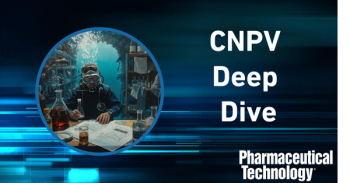
Challenges for the Global Manufacturing of Vaccines
Key Takeaways
- Vaccine manufacturing is challenged by stringent global regulations, essential for ensuring safety and efficacy, with harmonization efforts aiding LMICs.
- Significant expertise, investment, and consideration of external factors like supply chains are crucial for successful vaccine production.
Vishal Mukund Sonje, Vaccine Manufacturing Lead, CEPI, talks about the challenges that arise in the manufacturing of vaccines in various global regions.
The COVID-19 pandemic brought light to the global importance of vaccines and ensuring they are manufactured to quality standards for every region in which they are used.
PharmTech: How do complex global regulations and legal rules inhibit or help vaccine manufacturing?
Sonje (CEPI): Development and manufacturing regulations for vaccine development are quite stringent. However, these requirements are essential, since it ensures product safety and efficacy. The main regulatory bodies [FDA and European Medicines Agency] enforce rigorous standards from maintaining high quality of vaccines, and this is essential, since vaccines are injected into healthy individuals.
There are also efforts to harmonize regulatory standard across countries, for example, ICH [International Council for Harmonisation] guidance, WHO [World Health Organization] pre-qualification. These guidances ensure that there is streamlined approval and global distribution possible, mainly in the LMIC [low- and middle-income] countries.
Are there specific manufacturing issues pharmaceutical companies should consider when manufacturing a vaccine that will be used globally, especially in areas where the vaccine may be most needed?
Vaccine manufacturing involves complex bioprocessing, and it needs years, if not decades, of experience to develop technical depth and know-how. It also involves significant CapEx [capital expenditure] investment. Apart from that, knowing post-pandemic COVID periods, it is essential [that] each region enables different platforms that can be used in a pandemic situation. The platforms that can be used are mainly categorized into recombinant protein, viral vector, and mRNA [messenger RNA].
Thirdly, manufacturers need to keep in mind [the] overall ecosystem and external environment that could have [a] large impact on the success of manufacturing capabilities, for example, maturity of the regulatory authority, input material, supply chain, cold chain infrastructure, finished goods supply chain. For example, shortage of critical components could be challenging to manage and can have detrimental effects on the planning of manufacturing. These factors are essential for any region or manufacturer to keep in mind before moving into vaccine manufacturing.
For these reasons, there are some advantages for manufacturers in certain regions like global north or Asian economies, like India and China, while it is challenging to set up new facilities in new LMIC regions, such as Africa or [the] Latin American region.
Are manufacturers moving to patient-centered manufacturing for vaccines and creating modular manufacturing centers closer to where the vaccines are specifically needed?
Overall, the trend in [the] pharmaceutical industry is more personalized medicine, or [closer] to the end user. However, for vaccines, we still do not have [a] personalized vaccine development base. Having said that, post-COVID pandemic, there is [an] increased sense of urgency from all regions to enable vaccines’ self-sufficiency, and many manufacture within the region, so that during [a] pandemic period, the companies can shift their manufacturing base to manufacture vaccines and counter the pandemic situation.
Keeping that in mind, as I said earlier, three platforms that are mainly looked after or developed by these companies in LMIC regions are, namely, viral vector, [recombinant] protein, and mRNA. So LMIC regions, for example, Africa, together with Africa CDC, a newly formed health agency in Africa, is looking to develop capabilities in Africa for manufacturing based on these three platforms.
Newsletter
Get the essential updates shaping the future of pharma manufacturing and compliance—subscribe today to Pharmaceutical Technology and never miss a breakthrough.





